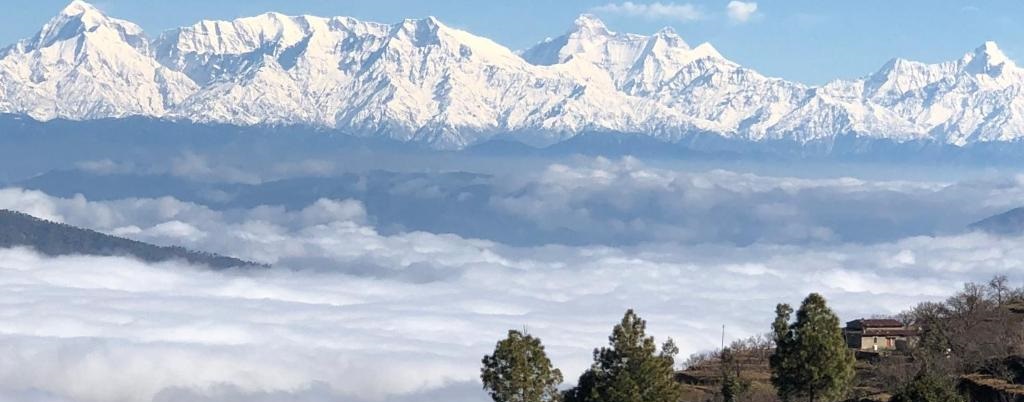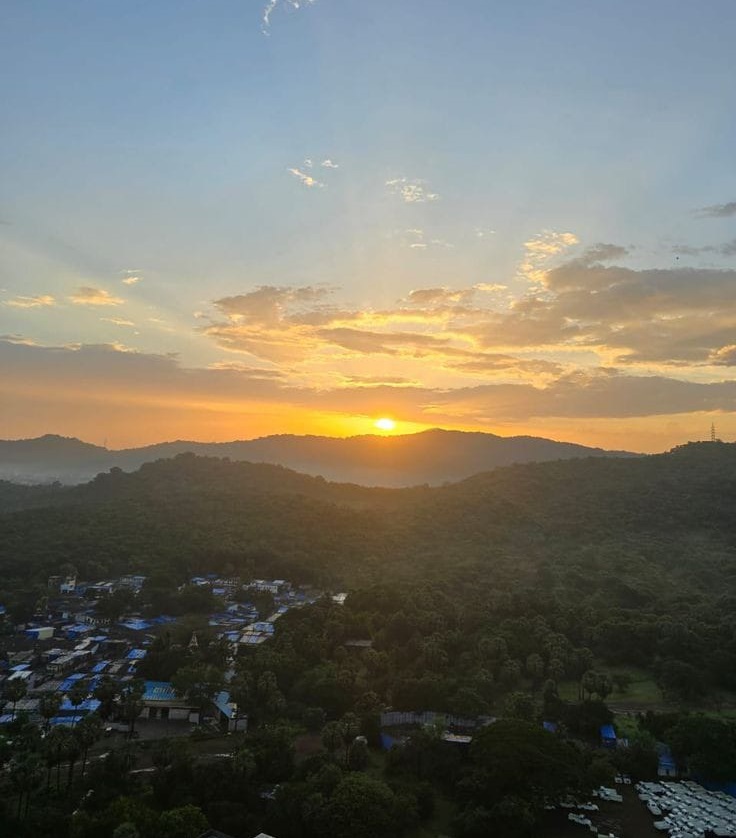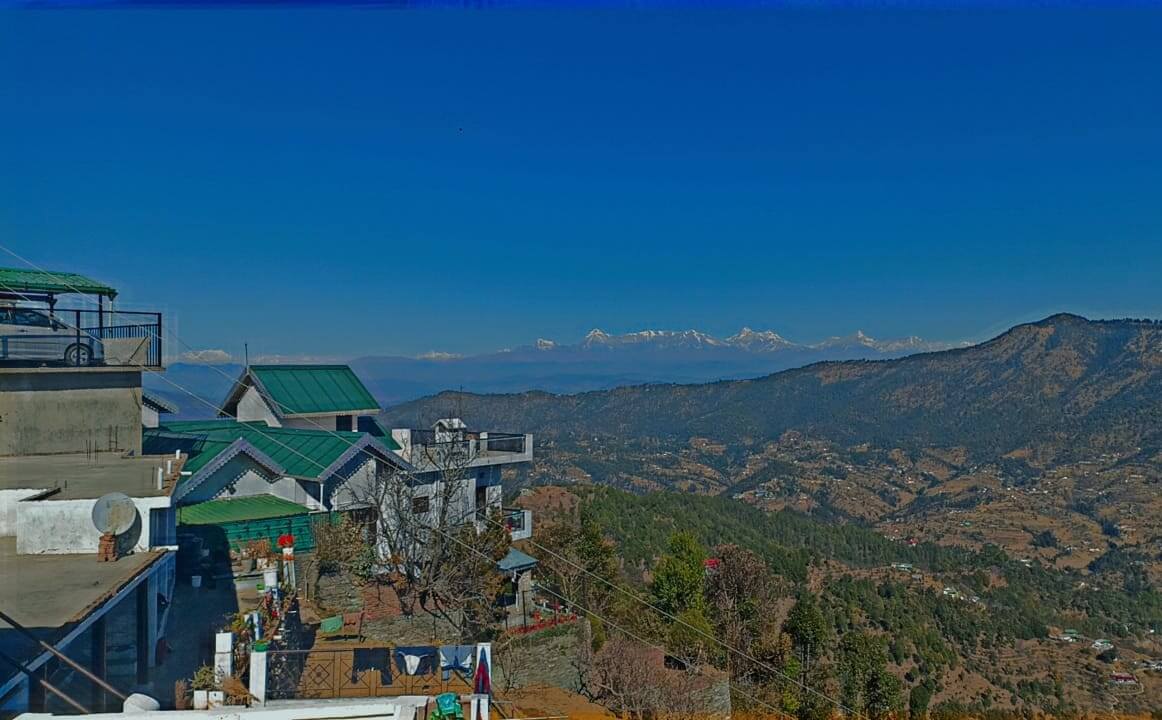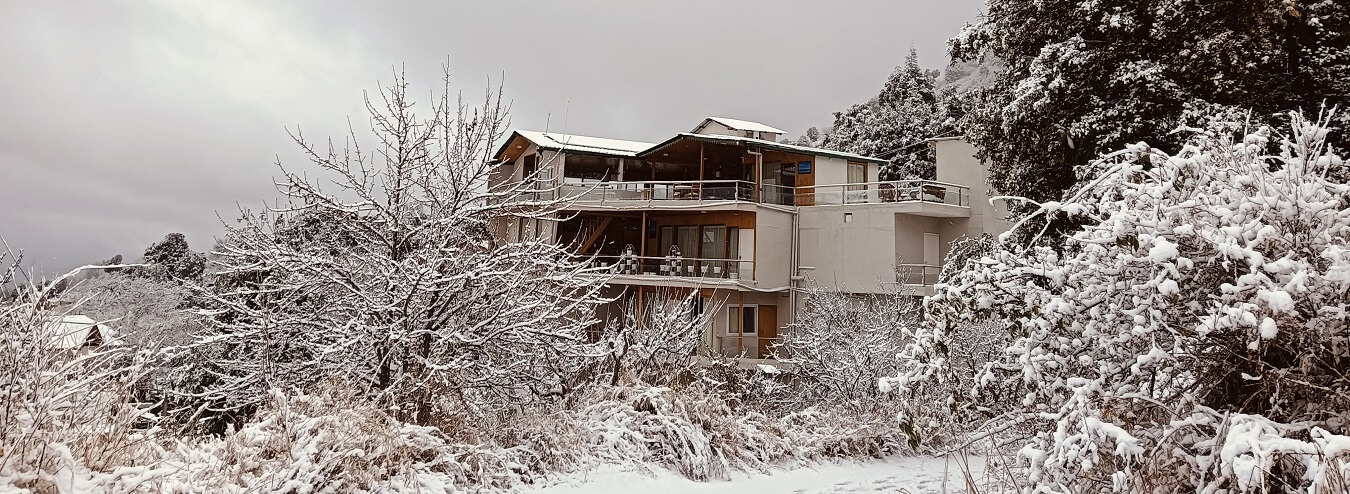Nestled in the serene Nainital district of Uttarakhand, India, Hartola is a quaint, sleepy hamlet that remains blissfully untouched by the typical tourist hustle and bustle. The village's name is derived from two significant words in Hindi Devanagari script: 'Har' meaning Lord Shiva, a highly revered deity in Hinduism, and 'tola' which signifies a dwelling place. Thus, Hartola beautifully translates to "the locale where Lord Shiva dwelled."
Adding to this enchanting narrative is an ancient Shiva temple perched amidst the mountains, which reinforces the village's spiritual significance. The gentle ringing of temple bells, harmonizing with the melodious chirping of mountain birds, creates a symphony that resonates through the air. Meanwhile, visitors are treated to breathtaking panoramic views of the majestic Himalayan peaks that surround Hartola.
The vista from Hartola is nothing short of spectacular, rivaling that of Mukhteshwar, a nearby village that boasts some British-era infrastructure. What sets Hartola apart is its remarkable vantage point atop a mountain ridge, offering a more intimate glimpse of the Indian and Nepalese ranges of the Himalayas compared to Mukhteshwar.
Whether you seek solace in nature, a spiritual retreat, or simply wish to experience the untouched beauty of Uttarakhand, Hartola beckons with open arms, inviting all to discover its hidden charms.

Hartola is a sleepy little hamlet located in the Nainital district in the state of Uttarakhand in India. True to its name, the charm of this village lies in its hidden accessibility from regular run-of-the-mill tourist radar. It borrows its name from two words in Hindi Devanagri script – ‘Har’ + ‘Tola’. ‘Har’ means Lord Shiva (a revered Hindu God) and ‘tola’ means the locale where one of a kind dwell. Thus, ‘Hartola’ denotes the locale where Lord Shiva dwelled.
A quaint and ancient Shiva temple up in the mountain here lends credence to this meaning. The sound of bells from this temple at a distance, coupled with the chirping of mountain birds, is music to one’s ears while the eyes feast on a panoramic view of the Himalayan peaks.
The view from Hartola rivals that from Mukhteshwar, a small mountain village that was developed with some infrastructure by the British. This is because Hartola, also atop a mountain ridge, has a closer view of the Indian and Nepal range of the Himalayas when compared to Mukhteshwar.


As per the last Population Census 2011, a total 130 families reside in Hartola and has a population of 668 of which 355 are males while 313 are females. Children in the age group 0-6 is 80 which makes up 11.98% of total population of village. The average sex ratio of Hartola village is 882 and the child sex ratio as per the last census is 1105, which is higher than Uttarakhand average of 890. At 82.82% Hartola has a higher literacy rate compared to that of the state with was compared to the 78.82% of Uttarakhand. Male literacy stands at 91.48% while female literacy rate was 72.69%.
The Kumaon region, which houses the district of Nainital, was under the rule of the Gorkhas before the Chand dynasty. The area of Hartola was owned by some members of the Rana dynasty, which ruled the Kingdom of Nepal from 1846 AD until 1951 AD. The name of the Queen who held Hartola as her estate was Rani Prem Pal. While relocating to Nepal, Rani Prem Pal ‘gave away’ this property to loyalists of her family who had helped her maintain the estate and the Shiva temple. What followed later was a legal battle in the High Court of Nainital between the descendants of the Queen, who were the owners, and the families who had received her estate.
The ‘gift’ was upheld by the High Court as an instrument of exchange and the descendants of the victorious family now owns one of the most enviable apple orchards, in terms of its flat setting on top of the mountain, facing the majestic Himalayas. From the centre of the 180 degrees, one can view the snow-clad Nandadevi and Trishul peaks.

Kathgodam Railway Station is the nearest major railhead to Hartola, situated around 60 kilometers away. There are several trains from Delhi to Kathgodam, including the Ranikhet Express and the Shatabdi Express. Once you arrive at Kathgodam, you can hire a taxi or take a local bus to Hartola. The drive from Kathgodam to Hartola takes about 2 to 3 hours.
The nearest airport to Hartola is Pantnagar Airport, located about 90 kilometers away. Several airlines operate daily flights from Delhi to Pantnagar. From Pantnagar, you can hire a taxi or take a bus to Hartola. The journey by road from Pantnagar to Hartola takes approximately 3 to 4 hours, depending on traffic and road conditions.